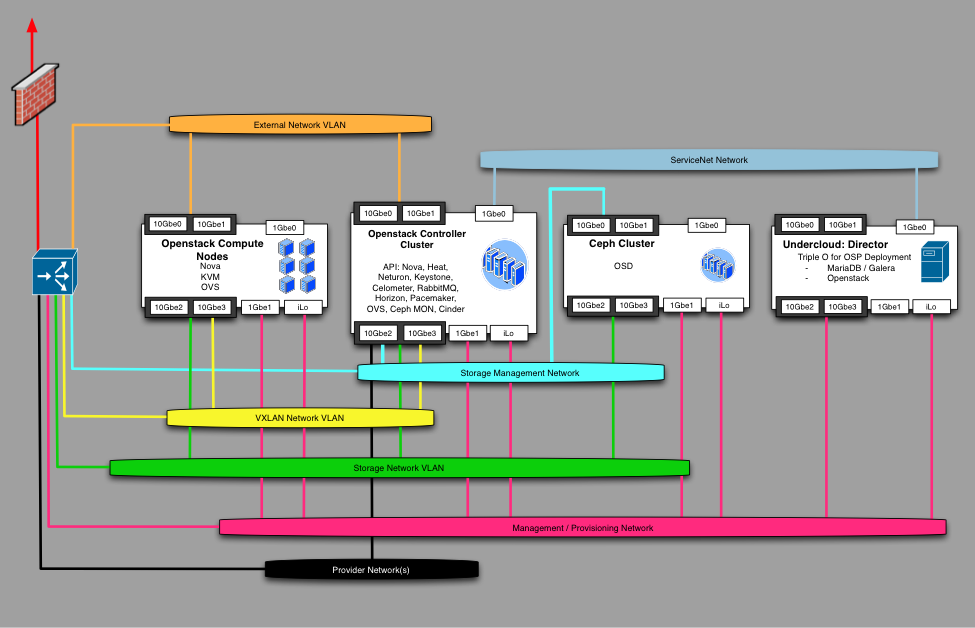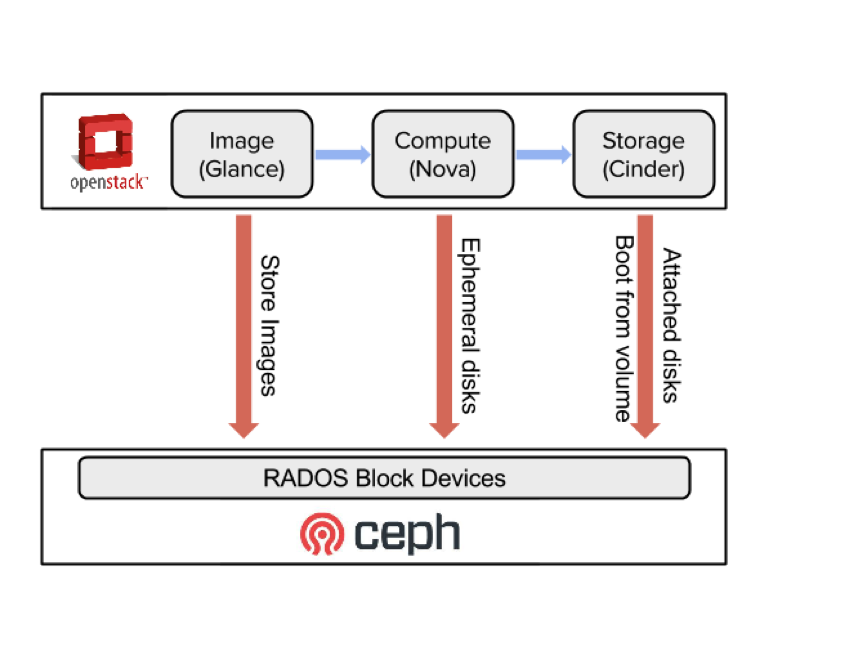RPCR Architecture
While based on Red Hat Enterprise Linux OpenStack Platform, the architecture of the Rackspace Private Cloud Powered By Red Hat (RPCR) solution is tailored to meet specific customer requirements along with our Fanatical Support. RPCR requires shared storage that uses the Converged Storage service (ceph), and can optionally use a NetApp device. For detailed guidance about architecting Red Hat Enterprise Linux OpenStack Platform implementations, refer to the Architecture Guide at: https://access.redhat.com/documentation/en/red-hat-enterprise-linux-openstack-platform/.
Note that the reference implementation described in this link is not identical to the RPCR implementation due to specific Rackspace customizations and optimizations. Refer to the RPCR detailed feature list in this document for a list of differences, or contact your Rackspace representative.
We can deploy RPCR in your data center or ours. For solutions deployed in a Rackspace data center, the following table describes a minimum proof of concept implementation.
| Type | Number |
|---|---|
| Hardware load balancer | 2 |
| Firewall appliance | 2 |
| Converged Storage service (ceph) node | 5 |
| NetApp appliance (optional) | As needed based on storage requirements |
| Controller node | 3 |
| Installation node (Can additionally function as a Controller node | 1 |
| Compute node | 5 |
| Network node (Nexus switches) | 2 |
The architecture of RPCR provides for the following requirements:
| Requirement | Description |
|---|---|
| Clustered database | The database that backs the OpenStack services is clustered and allows for horizontal scaling. Pacemaker provides failure recovery for the database cluster. |
| Clustered queue | The queuing service is clustered and allows forhorizontal scaling. Pacemaker provides failure recovery for the queue. |
| Fail-over | Services are restarted with minimal interruption. |
| Horizontal scaling of services | OpenStack services are scalable up or down across multiple hardware nodes as computing needs change. |
| Host operating system installation | The host operating system is installed by Red Hat Director. The installation also manages patches, upgrades, and configuration change implementation |
| Hardware load balancing | Load balancing is provided through hardware appliances. An exception to this is a stand-alone HAProxy device which is treated as a physical load balancer to the cloud. |
| Monitoring | Monitoring in Rackspace data centers is provided using MaaS and is deployed automatically. |
| Single installation node | A single hardware node is used to deploy all OpenStack services and to maintain and monitor nodes. |
RPCR reference architecture
The following figure illustrates the RPCR general reference architecture:

The following figure illustrates the RPCR network architecture:

The following figure illustrates the general ceph architecture for RPCR:

Updated about 1 month ago
